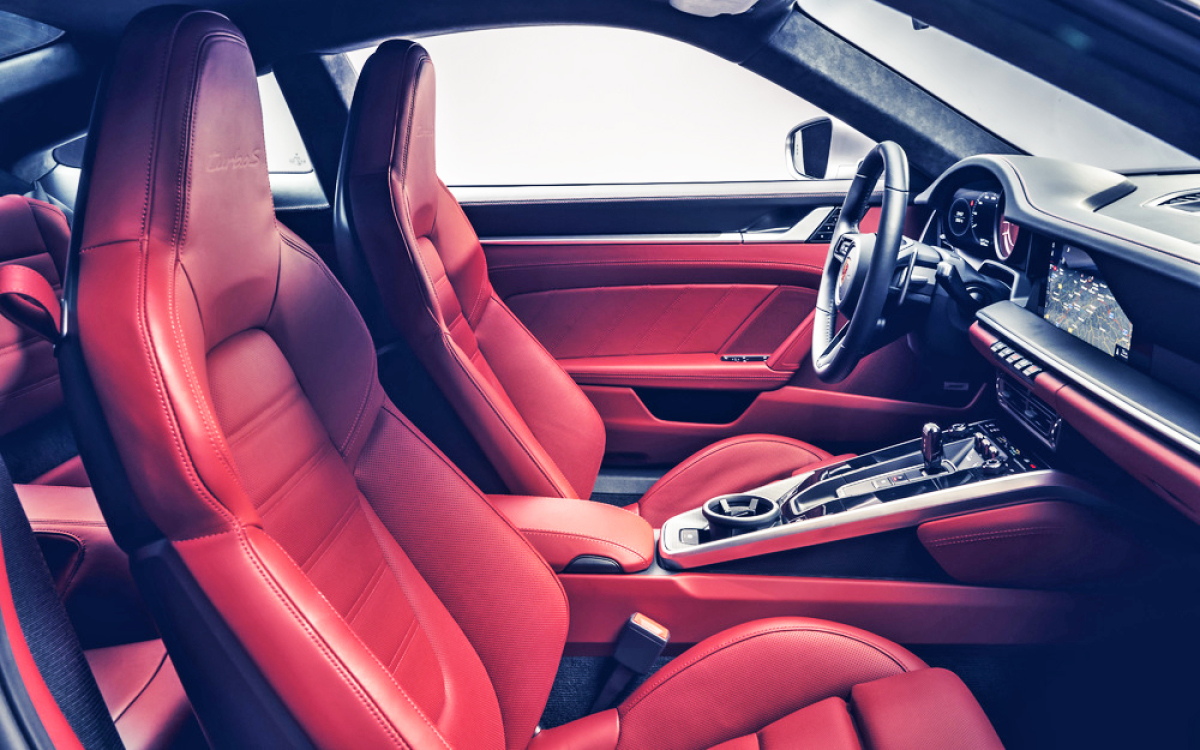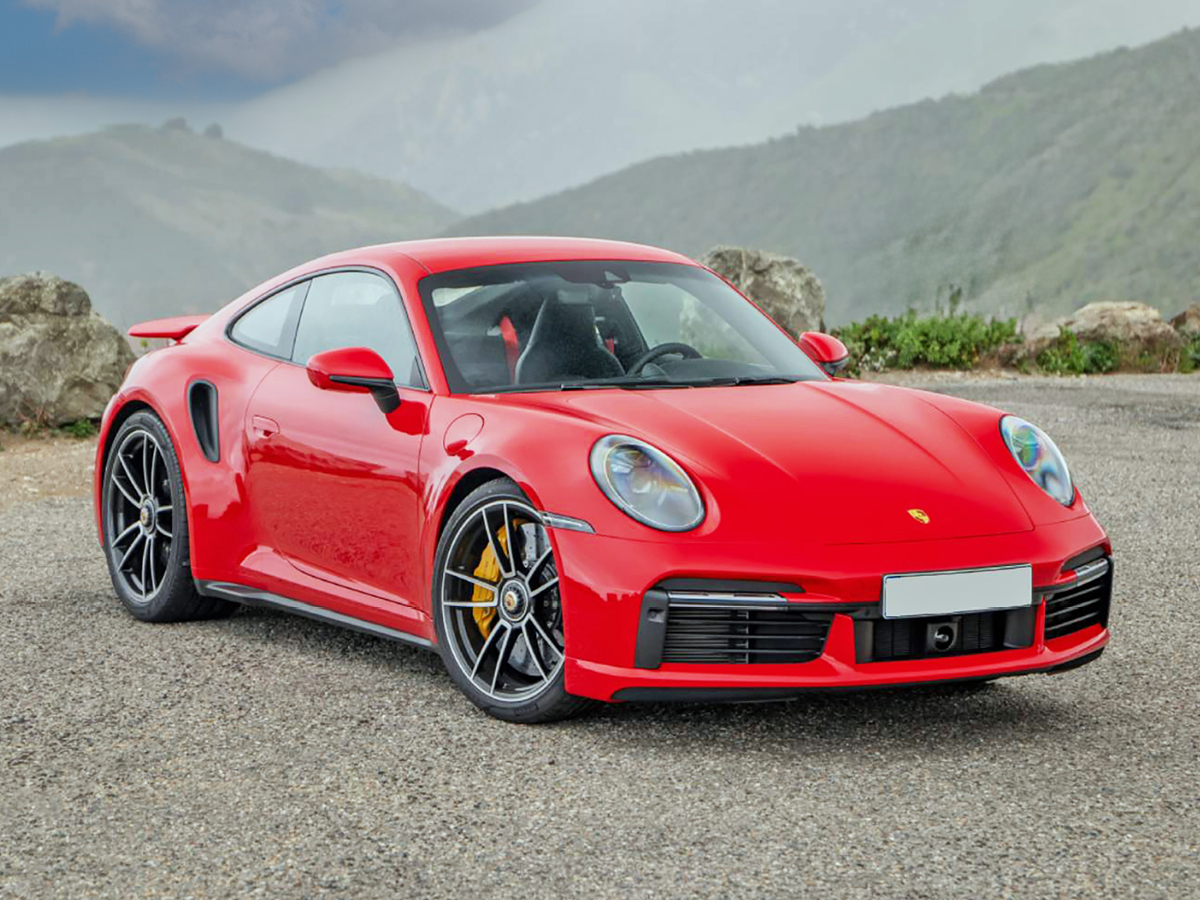Still Blowing Minds on Gas
While some high-end EVs can post blazing acceleration figures, internal combustion machines from Porsche, Ferrari, and Lamborghini can still bring it, and with all the visceral excitement that comes with a roaring piston engine.
Today, the quickest ICE-powered sports and exotic cars get help from electric motors, as we recently explored with the Ferrari 296GTB and Lamborghini Revuelto hybrids. Porsche had been in that arena before with the 918 Spyder, but one purely ICE Porsche – with no electric motors helping – still blows minds on road or track: the 911 Turbo S.
The 2023 911 Turbo S coupe starts at $230,400 before options, a $31,000 premium over the standard 911 Turbo. Both are available as Cabriolets for about $13,000 over the coupe prices.
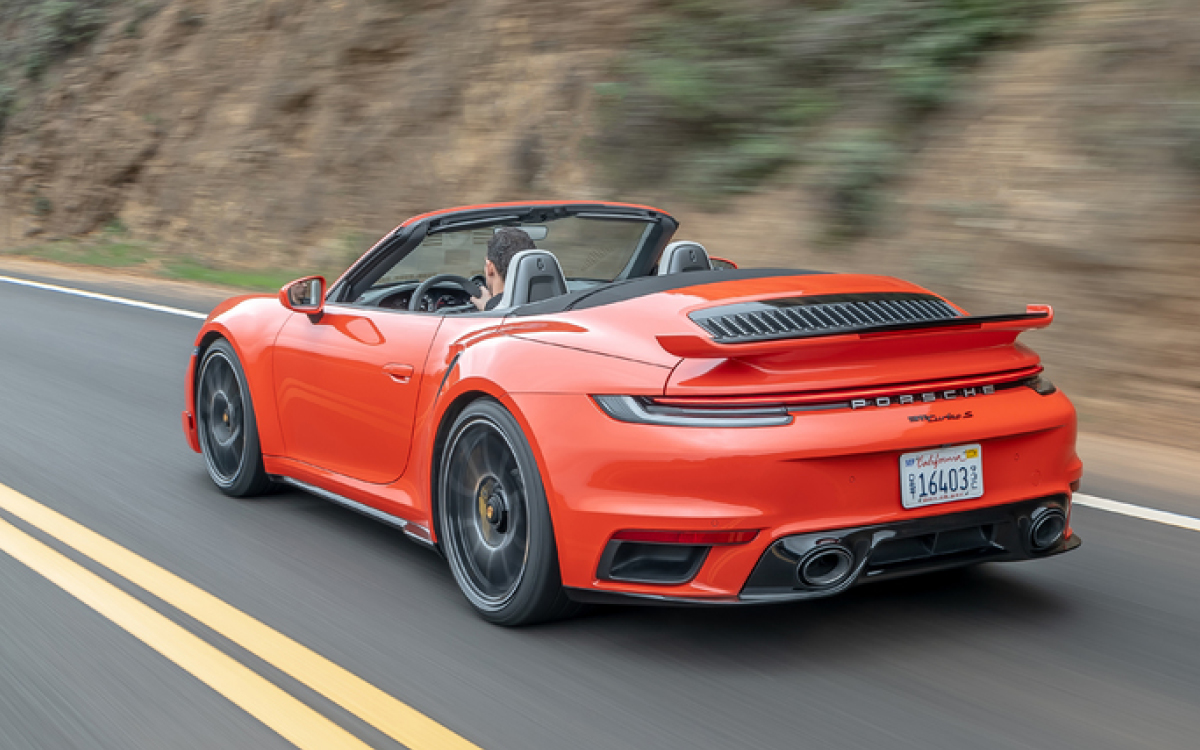
“Turbo” = “Top” at Porsche
Automotive marketing students can find plenty to debate about Porsche’s current model-naming protocols. To wit: the top version of the Taycan EV is called “Turbo S,” despite, of course, not even having an internal combustion engine that could be turbocharged. But then, PC chipmaker Intel uses “turbo boost” in its microprocessors, which of course are not even cars.
Meanwhile, all current Porsche 911 Carrera models use turbocharged engines, yet the Turbo badge is reserved for the top model. You really can’t blame Porsche for such a confusing naming tactic. The Turbo badge has been signifying the highest-powered 911 model since the first 911 Turbo arrived on our shores in 1975 as a 1976 model.
That car, more accurately called the 930 or Turbo Carrera, did 0-60 in 4.9 seconds, the quarter mile in 13.5 seconds at 102 mph, and could reach a 156-mph top track speed. In those mid-Seventies malaise days of performance, the first turbocharged production Porsche had no peer in this market.
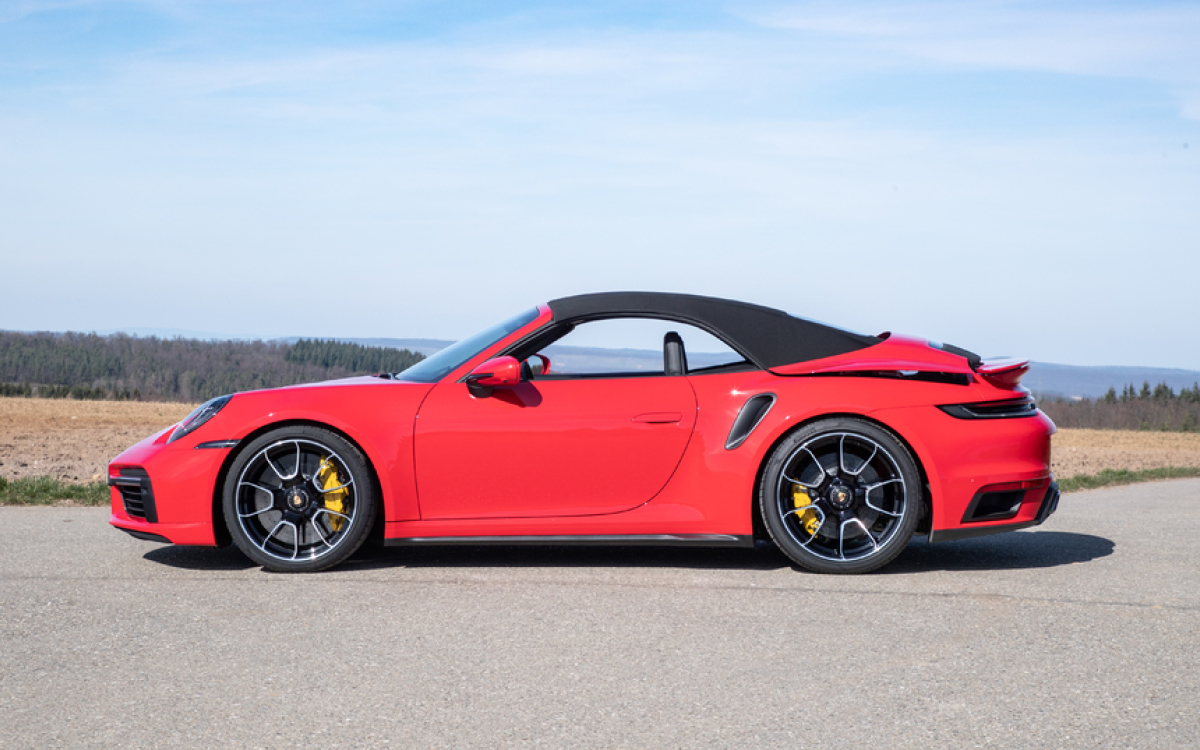
Darwinism at Porsche
Automotive evolution escalated the 911 Turbo’s capability and performance over the decades. The 1996 models reached the 400-horsepower mark and got all-wheel drive to help tame the surly handling of the earlier models. The first 911 Turbo S was offered as a sendoff to the revered 993 series 911 model offered from 1995-1997.
Porsche made just 345 of those, sending 176 to the U.S. That Turbo S raised engine output to 424 hp (up from the standard Turbo model’s 400) and enabled 0-60 in 3.5 seconds and a 184-mph top speed. Turbo S models returned in each of the subsequent 911 model series.
A glance at the performance specs for today’s 911 Turbo S makes clear why this Porsche remains such a revered machine, even among exotics that cost far more. Let’s start with a couple of fun facts. First, at 3,635 pounds, the current Porsche 911 Turbo S weighs about 800 more than the 1976 911 Turbo. But it is staggeringly more powerful than its 234-horsepower ancestor.
The 2023 Porsche 911 Turbo S uses a 3.7-liter (3,745cc, to be precise) flat-six engine with twin variable-turbine geometry turbos. Its 640 horsepower exceeds the standard 911 Turbo by 68 hp. Torque tells a similar story, with the Turbo S flouting 590 lb-ft. at 2,500 rpm vs. a still-formidable 553 lb-ft. at 2,250 rpm for the standard Turbo model. (You may notice that the standard 911 Turbo’s hp and torque figures match those of the previous Turbo S. That’s evolution, Porsche-style.)
As before, both the 911 Turbo and 911 Turbo S channel their power to the road via PDK eight-speed automatic transmission and all-wheel drive.
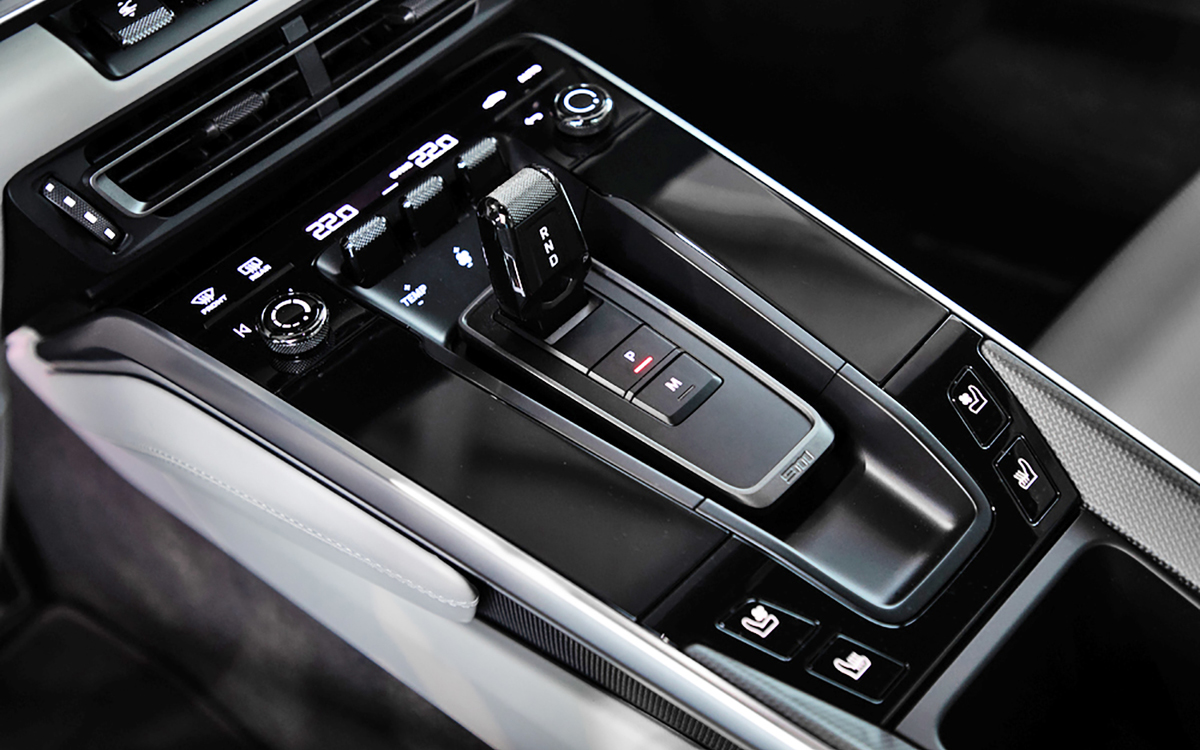
How Quick? Glad You Asked
Drive a Porsche 911 Turbo or Turbo S, and everyone will ask, “How fast?” In both cases, you can simply answer, “Very.” For the S, it’s a smidge more “very.” Major auto media tests show the current 911 Turbo S hitting 30 mph from zero in under one second, and then reaching 60 mph in 2.2 seconds. Compare that to the 2.6 seconds that Porsche conservatively claims with the optional Sport Chrono Package, which of course every Turbo and Turbo S buyer likely orders.
Keep your foot down on a drag strip, and the 911 Turbo S can blow through the quarter mile in 10.1 seconds at 137 mph. If you really live to chop off those precious tenths of seconds, the 911 Turbo S nips the Ferrari 296 GTB by 0.2-sec. from 0-60, but the Ferrari hybrid passes the Porsche by the quarter mile, clocking that in 9.7 seconds at 150 mph. In both cars, you’ll use Launch Control to get those numbers. You might want to rent (or buy) an airport runway for this activity.
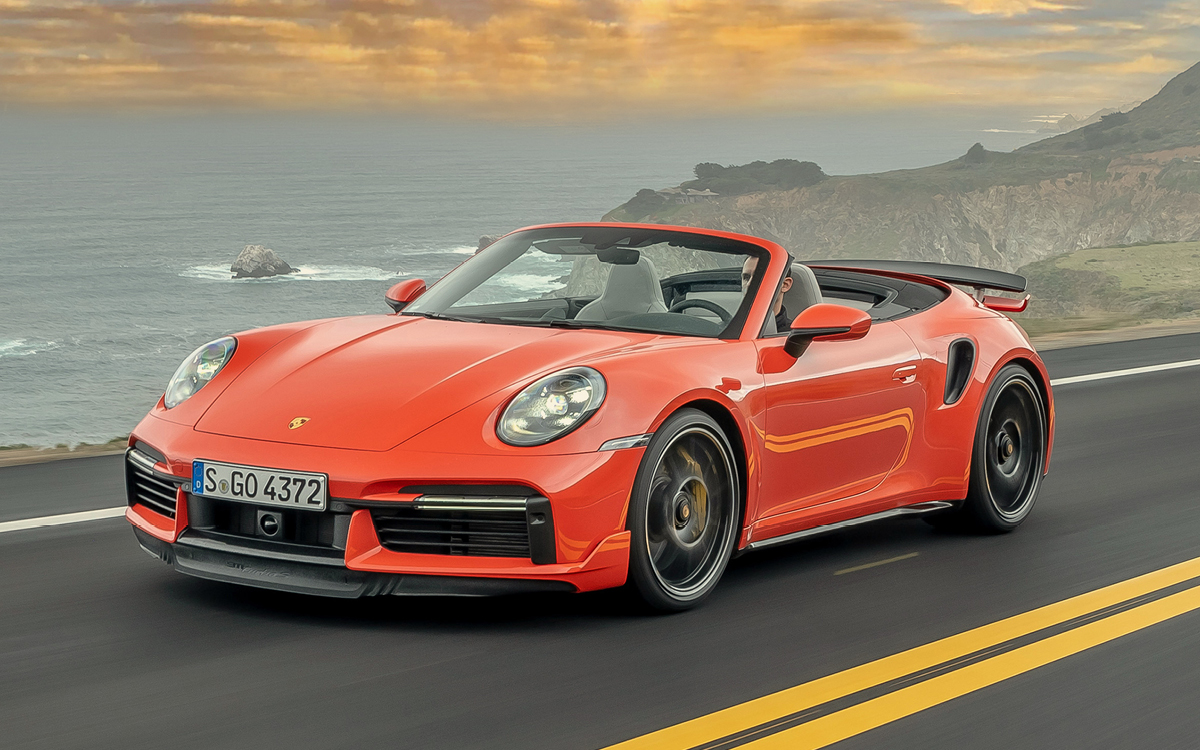
Life is Not a Straight Road
Most Porsche drivers crave curves, too, and the 911 Turbo S fills the need. As on the standard Turbo, rear steering comes standard, but with Porsche’s PDCC active anti-roll bars added to the S. The optional Porsche Active Suspension Management (PASM) Sport Suspension lowers the car by 10mm and has other tweaks. On a track, the S can pull a max of 1.10 g cornering.
Track driving will remind you why the PDK transmission is a superior partner over a manual transmission because it lets you keep both hands on the wheel. Just let the transmission computer select the gears. Part of the Turbo S price premium goes to standard carbon-ceramic brake rotors, which are massive at 16.5 inches diameter.
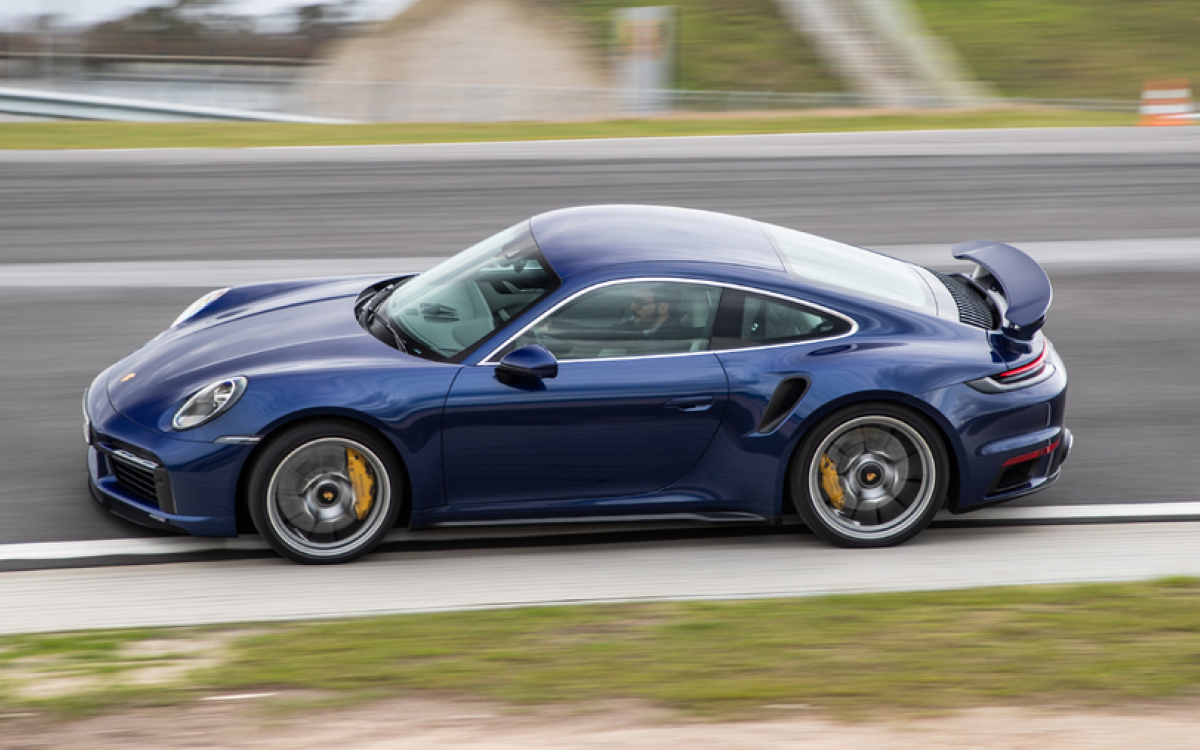
Still the King
If you know your Porsches (and we’re betting that you do), the standard luxury and smorgasbord of available options needs no explanation.
For the record, Porsche’s king EV, the Taycan Turbo S, rides right on the gas sports car’s rear bumper in acceleration tests. Yet, even if you have a Taycan Turbo S in the garage, you’re still going to want the Porsche with the actual turbos, the incomparable 911 Turbo S.
